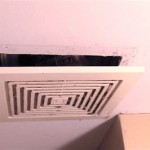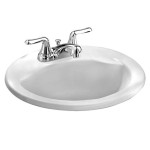What Kind of Paint to Use on Bathroom Ceramic Tiles
Renovating a bathroom can be a costly undertaking, and replacing ceramic tiles can significantly contribute to the overall expense. Painting ceramic tiles presents a more economical alternative, allowing homeowners to update the aesthetic of their bathrooms without the disruption and cost associated with a full replacement. However, the success of this project hinges significantly on selecting the appropriate type of paint that can withstand the unique challenges presented by the bathroom environment.
Bathrooms are characterized by high humidity, frequent temperature fluctuations, and the potential for water contact. These conditions necessitate a paint that offers exceptional adhesion, moisture resistance, and durability. While standard wall paints are unsuitable for this application, several specialized paints are formulated to adhere to ceramic surfaces and withstand the demands of a bathroom environment. Understanding the properties of these paints is crucial for achieving a long-lasting and aesthetically pleasing result.
Understanding the Challenges of Painting Ceramic Tiles
Ceramic tiles are inherently smooth and non-porous, making it difficult for paint to adhere properly. Traditional paints often peel, chip, or blister due to the lack of adequate surface adhesion. The glossy finish of many ceramic tiles further exacerbates this issue, creating a barrier that prevents the paint from bonding effectively. In addition, the grout lines between the tiles can pose a challenge, as they can be porous and require special attention to ensure uniform coverage and prevent moisture penetration.
The moisture levels in a bathroom can also compromise the integrity of the paint. Water can seep behind the paint film, leading to blistering, peeling, and eventual failure. Temperature fluctuations, such as those caused by hot showers, can cause the tiles to expand and contract, placing stress on the paint and further increasing the risk of cracking or peeling. Therefore, the selected paint must be highly resistant to moisture and capable of withstanding temperature variations without compromising its adhesion or finish.
Finally, the potential for chemical exposure must be considered. Bathroom cleaning products often contain harsh chemicals that can damage or discolor the paint. The paint must be resistant to these chemicals to maintain its appearance and prevent degradation over time. This requires a paint formulation that is durable and chemically inert.
Types of Paint Suitable for Bathroom Ceramic Tiles
Several types of paint are designed to adhere to ceramic tiles and withstand the challenges of a bathroom environment. These paints typically contain specialized resins and additives that enhance adhesion, moisture resistance, and durability. The most common and effective options include epoxy paints, acrylic-epoxy hybrids, and specialized tile paints.
Epoxy Paints: Epoxy paints are renowned for their exceptional durability, hardness, and resistance to chemicals and moisture. They form a rigid, impermeable layer that effectively protects the underlying surface from water damage and chemical exposure. Epoxy paints typically consist of two components – a resin and a hardener – that must be mixed together before application. This chemical reaction creates a strong, durable bond that is highly resistant to scratches, stains, and abrasion. Epoxy paints are an excellent choice for bathroom tiles, particularly in areas that are frequently exposed to water, such as shower walls and backsplashes.
However, epoxy paints can be more challenging to apply than other types of paint. They typically require a longer drying time and can emit strong fumes during application. Proper ventilation is essential when working with epoxy paints. Furthermore, epoxy paints can be less flexible than other options, which may make them more susceptible to cracking in areas that experience significant temperature fluctuations. Despite these drawbacks, epoxy paints offer unparalleled durability and chemical resistance, making them a popular choice for bathroom tile projects.
Acrylic-Epoxy Hybrids: Acrylic-epoxy hybrid paints combine the advantages of both acrylic and epoxy resins. They offer good adhesion, durability, and moisture resistance, while also being easier to apply and less odorous than traditional epoxy paints. Acrylic-epoxy hybrids are typically water-based, making them easier to clean up and more environmentally friendly. They also tend to be more flexible than pure epoxy paints, which can reduce the risk of cracking in areas subject to temperature changes.
Acrylic-epoxy hybrids provide a good balance between performance and ease of use. They are suitable for most bathroom tile applications and offer a cost-effective alternative to pure epoxy paints. However, they may not be as durable or chemical-resistant as epoxy paints, particularly in areas that are constantly exposed to water or harsh cleaning chemicals.
Specialized Tile Paints: Some manufacturers offer paints specifically formulated for ceramic tile surfaces. These paints typically contain proprietary blends of resins and additives that promote adhesion and provide a durable, water-resistant finish. Specialized tile paints are often available in a variety of colors and finishes, allowing homeowners to achieve their desired aesthetic. They are typically easier to apply than epoxy paints and may require less surface preparation. However, the performance of specialized tile paints can vary depending on the brand and formulation. It is essential to choose a high-quality product from a reputable manufacturer to ensure optimal results.
When selecting a specialized tile paint, it is crucial to carefully read the product label and follow the manufacturer's instructions. Some tile paints may require the application of a primer to enhance adhesion, while others may require multiple coats to achieve adequate coverage and durability. Furthermore, some tile paints may not be suitable for areas that are constantly exposed to water, such as shower walls. Therefore, selecting a product that is specifically designed for wet environments is essential. Always check the product description to verify if it is suitable for bathroom and shower application.
Preparing the Surface for Painting
Regardless of the type of paint chosen, proper surface preparation is crucial for achieving a successful and long-lasting paint job. The ceramic tiles must be thoroughly cleaned and degreased to remove any dirt, grime, or soap scum that may interfere with paint adhesion. This can be accomplished using a combination of soap, water, and a scrub brush. For stubborn stains or mildew, a specialized tile cleaner or bleach solution may be necessary. Always wear protective gloves and eye protection when working with cleaning chemicals. After cleaning, the tiles must be thoroughly rinsed with clean water and allowed to dry completely.
Sanding the tiles is generally recommended to create a slightly rough surface that will promote better paint adhesion. Use a fine-grit sandpaper (e.g., 220-grit) to lightly sand the tiles, being careful not to scratch or damage the surface. Pay particular attention to glossy areas, as these tend to be more resistant to paint adhesion. After sanding, remove all sanding dust with a tack cloth or damp cloth. A primer can further improve adhesion and create a uniform base for the paint. Choose a primer that is specifically designed for ceramic tiles and follow the manufacturer's instructions for application.
Grout lines can be a source of moisture penetration and should be properly sealed before painting. Apply a grout sealer to fill any cracks or imperfections and prevent water from seeping behind the tiles. Allow the grout sealer to dry completely before proceeding with painting. Masking tape should be used to protect adjacent surfaces, such as fixtures, trim, and walls, from paint splatters. Carefully apply the masking tape to create clean, crisp lines and ensure a professional-looking finish. Remove the masking tape immediately after painting to prevent the paint from peeling or chipping.
Before applying the paint to the entire surface, test the paint on an inconspicuous area to ensure adequate adhesion and color accuracy. This will allow you to evaluate the paint's performance and make any necessary adjustments before committing to the entire project. Allow the test area to dry completely and inspect it for any signs of peeling, blistering, or discoloration. If the test area appears satisfactory, you can proceed with painting the entire surface. Apply the paint in thin, even coats, following the manufacturer's instructions for drying time and recoating. Avoid applying thick coats of paint, as this can lead to drips, runs, and uneven drying. Use a high-quality brush or roller to achieve a smooth, consistent finish.

The Best Paint For Tile Arinsolangeathome

Can I Paint Ceramic Tiles In Bathroom Ramsden Painting

Stenciled Floor Rust Oleum

How To Paint Over Ceramic Tiles In A Bathroom

Update Your Bathroom Tiles With Dulux Renovation Range Paint

How To Paint Tile Floor Angela Marie Made

How To Paint Bathroom Tile Floors

How To Paint A Tile Floor Artsy Rule

Diy How To Paint Ceramic Floor Tile Farmhouse Living

Can You Paint Ceramic Floor Tile
Related Posts







